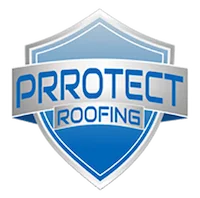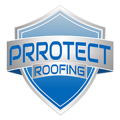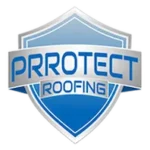Roof repair is an essential part of homeownership. Over time, weather damage, wear and tear, or accidents can cause roofing problems. When issues arise, many homeowners face the dilemma of whether to handle the repairs themselves or call in a professional. DIY roof repair can seem like an appealing option, as it promises cost savings and a sense of accomplishment. However, it can also present significant risks if not done correctly. This blog explores the advantages and potential pitfalls of tackling roof repairs on your own, helping you make an informed decision about when to go DIY and when to bring in the pros.
The Appeal of DIY Roof Repair
DIY projects can offer a sense of satisfaction and save money. For many homeowners, roof repairs seem like a manageable task, especially when it comes to fixing small leaks, replacing damaged shingles, or performing routine maintenance. DIY roof repair often appeals to those who enjoy hands-on work and want to avoid the cost of hiring a professional.
1. Cost Savings
One of the most obvious reasons homeowners consider DIY roof repair is the potential to save money. Hiring a professional roofer can be expensive, particularly if the problem requires complex repairs or involves significant damage. For minor repairs, homeowners may feel confident enough to handle the task themselves and avoid paying for labor and service fees.
Additionally, many homeowners already own some of the necessary tools for roof repair, such as ladders, sealant, and hammers. This can further reduce the cost of DIY repairs, as it eliminates the need to rent or purchase specialized equipment.
2. Sense of Accomplishment
There’s a certain satisfaction that comes with completing a home improvement project yourself. Successfully repairing a leak or replacing damaged shingles can provide a sense of pride and accomplishment. DIY enthusiasts often enjoy the process of problem-solving and the physical challenge of working on their home’s exterior.
For those who enjoy working with their hands and learning new skills, DIY roof repair can be a rewarding experience. It allows homeowners to take control of their home maintenance and feel empowered by their ability to manage repairs.
3. Control Over the Process
When you repair your roof yourself, you have full control over the process. You can work at your own pace, choose your materials, and make decisions based on your preferences. For some homeowners, this level of control is appealing, as they can ensure that the repairs are done exactly the way they envision.
The Risks of DIY Roof Repair
While DIY roof repairs may seem appealing, they come with significant risks. Roofing is a complex and dangerous task that requires expertise and proper safety precautions. For inexperienced homeowners, DIY roof repair can lead to more damage, costly mistakes, and even personal injury.
1. Risk of Injury
Roofing repairs often involve working at heights, using heavy tools, and dealing with slippery surfaces. Even for those with a steady hand, roofing can be physically demanding and dangerous. Falls are a leading cause of injury during DIY roof repairs, and homeowners without proper training may struggle to assess and mitigate the risks involved.
If you’re not comfortable with heights or don’t have the right safety gear (such as harnesses, helmets, or ladders), it’s easy to underestimate the dangers of roof repair. Accidents can result in serious injury or even death, making safety one of the most significant concerns when considering DIY roof repairs.
2. Inadequate or Improper Repairs
A significant risk of DIY roof repair is the potential for incomplete or improper fixes. Without professional expertise, homeowners may not fully understand the extent of the damage or the correct methods for repairing it. Even small mistakes can lead to bigger problems, such as leaks, water damage, or further structural issues.
For example, improperly sealed flashing or incorrectly installed shingles may seem like a minor issue at first but could lead to more significant problems over time, such as mold growth or rotting wood. Even if a DIY repair is successful in the short term, it may not be durable enough to withstand the elements in the long term.
3. Warranty and Insurance Concerns
Many roofing materials and products come with warranties that may be voided if the installation or repairs are not performed by a licensed professional. If you attempt DIY roof repair and encounter problems down the line, you may find that the manufacturer or insurance company refuses to honor the warranty or cover the costs of further damage.
Similarly, your homeowner’s insurance policy may not cover damage resulting from DIY repairs, leaving you responsible for the full cost of repairs. These factors make it essential to consider the long-term implications of DIY roof repair before deciding whether to tackle the project yourself.
4. Time and Effort
While DIY roof repairs may seem like a time-saving solution at first, they can often take longer than expected. Roofing repairs require careful attention to detail and meticulous work, and an inexperienced homeowner may struggle to complete the task efficiently. What seemed like a simple fix may end up becoming a time-consuming and exhausting project, especially if unexpected issues arise during the repair process.
In addition, unexpected weather conditions, such as rain or snow, may cause delays, further extending the time it takes to complete the job. Professional roofers, on the other hand, have the experience and tools necessary to complete repairs quickly and efficiently, ensuring that your roof is secure and protected.
When to Attempt DIY Roof Repairs
Not all roof repairs require professional intervention. For minor issues that are easy to fix, such as replacing a few shingles, sealing small leaks, or performing routine maintenance, DIY repair may be a viable option. Here are some situations where DIY roof repair might make sense:
1. Minor Shingle Repair
If a few shingles are loose, cracked, or missing, this is generally a straightforward fix that most homeowners can handle with the right tools and materials. Replacing a single shingle or a few damaged ones typically doesn’t require professional expertise and can be completed quickly and easily.
2. Cleaning and Gutter Maintenance
Roof maintenance tasks such as cleaning gutters, removing debris from the roof, or checking for moss and algae growth are typically safe DIY tasks. These activities help maintain the integrity of the roof by preventing water damage, mold, and other issues.
3. Sealing Small Leaks
If you spot a small leak in your roof, you may be able to seal it yourself with roofing cement or a patching product. However, this should only be done if you can identify the source of the leak and it is a minor issue. If the leak is widespread or located in a difficult-to-reach area, calling a professional is recommended.
When to Call a Roofing Professional
While some DIY roof repairs are manageable, there are situations where professional help is essential. For more complex repairs or large-scale issues, hiring a professional roofer is the safest and most cost-effective choice. Here are scenarios where it’s best to call in an expert:
1. Major Roof Leaks
If you have a significant or persistent leak, it’s important to call a professional. A professional roofer will be able to locate the source of the leak, which may not be immediately obvious. Leaks that persist despite DIY attempts can lead to severe water damage, mold growth, and structural issues.
2. Damage After a Storm
Severe weather, such as hailstorms or high winds, can cause extensive roof damage. If your roof has suffered damage from a storm, it’s crucial to have it inspected by a professional to assess the full extent of the damage and ensure that repairs are done properly.
3. Roof Replacement
If your roof is nearing the end of its lifespan or has extensive damage, replacing the entire roof is a major undertaking. A professional roofer has the expertise to guide you through the roof replacement process, from selecting the right materials to ensuring the job is done correctly and safely.
Professional Help Often Makes the Most Sense
While DIY roof repair can be a tempting option for homeowners looking to save money, it’s important to weigh the risks and potential consequences. While minor repairs may be manageable, more complex issues or major damage often require the expertise of a professional roofer. By understanding the pros and cons of DIY roof repair and knowing when to call in a pro, homeowners can make informed decisions that will protect their homes and save money in the long run. At Prrotect Roofing, as a roofing contractor in St.Peters, Fenton & Ballwin, we have the expertise and knowledge to handle repairs safely and effectively, ensuring high-quality work
FAQs
What are the risks of DIY roof repair?
The risks of DIY roof repair include injury from falls, improper repairs leading to further damage, voided warranties, and insurance complications.
When should I attempt DIY roof repairs?
DIY roof repairs are suitable for minor issues such as replacing a few shingles, cleaning gutters, or sealing small leaks.
How do I know when it’s time to call a roofing professional?
It’s time to call a professional if you experience major leaks, storm damage, or if your roof needs replacement. Professionals can also handle repairs that involve complex issues.


